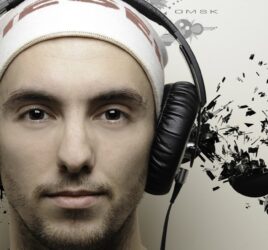
Ritalin in the Sewers
Researchers at the National Institute for Public Health and the Environment (RIVM) have analyzed sewage for remnants of certain psychoactive substances. What does it tell us about students’ consumption?
Throughout the last 20 years, people’s and in particular students’ performance-enhancing substance use has repeatedly received attention, both by scholars and in the general media. This behavior is sometimes called “neuroenhancement” or “brain doping”. Recently, the Dutch government and parliament addressed this issue as “improper use” (Dutch: oneigenlijk gebruik) of medical drugs, particularly those substances commonly prescribed as treatment for ADHD.
In response to the government’s initiative, researchers at the National Institute for Public Health and the Environment (RIVM) investigated sewage in three Dutch university cities: Amsterdam, Eindhoven, and Utrecht. The team around senior scientific officer Bastiaan J. Venhuis utilized the fact that the body metabolizes a certain rate of methylphenidate, the psychoactive ingredient in the well-known drug Ritalin, into Ritalinic acid (C13H17NO2).
Measuring the concentration of Ritalinic acid in the sewage system allowed them to estimate the consumed amount of Ritalin in these cities. This estimated amount could be compared to the prescription rates: What would be expected on the basis of doctors’ decisions in these areas?.
To get a complete picture, these researchers took several probes from sewage water in each of the cities on seven consecutive days in autumn 2022. The concentrations found in the sewage varied between 0.4 and 1.2 µg (micrograms) per liter (Bakker-’t Hart et al., 2023). In Utrecht, they were lower in the weekend, in Amsterdam on Sunday and Monday.
Importantly, the researchers report that these numbers correspond to what would be expected from the prescription data, thus how much methylphenidate is prescribed for medical reasons. This would show, Venhuis and his team suggest, that the “improper use” of this drug is due to medically prescribed Ritalin and similar drugs which are passed on to people without a prescription and not illegally produced substances or imports from abroad.
But how common is “brain doping”, after all?
But the molecules of Ritalinic acid found in sewage don’t tell us whether they come from medical or “improper” use (the latter formally being a breach of the prohibitive drug law). And here lies a problem in the reasoning of the RIVM researchers, in my view:
The consumption of performance-enhancing drugs has been hyped repeatedly, often suggesting that “brain doping” or “improper use” is quite common. For example, the non-representative survey of my colleague Anselm Fuermaier has been quoted to claim that 16% of the students were doing it already (Fuermaier et al., 2021). However, looking at their results more carefully reveals that although 170 of 1071 students (thus 16%) responded to have used such substances non-medically at least once in their lives, only 2 out of 1071 (thus 0.2%) said to be doing this regularly. Besides that, the majority of these students described their use as recreative, not study-related.
Recent representative surveys initiated by the government’s and parliament’s interest in this topic confirm the review of international survey data (e.g., Schleim & Quednow, 2018) that “brain doping” exists, but not on extremely high levels. For the Netherlands, only 2% of the students reported to have used stimulant drugs non-medically at least once in the previous month (IVM, 2022). Accordingly, Dutch minister of health Ernst Kuipers informed the parliament as follows:
“In general, I find it undesirable that some students sometimes resort to these means. At the same time, the figures show that fortunately this is not common practice.”
Ernst Kuipers in his letter to the parliament of June 30, 2022; English translation
Thus, it may well be that some students occasionally get such a stimulant pill from their friends or siblings. But this does not seem to occur at such a high rate that you could expect that to have a huge impact on the quantity found in sewage. Cleaning that water from the remnants of drugs is actually becoming an increasing challenge for the treatment plants. But that’s a topic for another occasion.
Learn More About Brain Doping
Stephan Schleim has been investigating “neuroenhancement” or “brain doping” for more than 15 years. At the RUG, he recently published a concise “brain doping report” in three languages (Dutch, English, German) as well as the open access book “Mental Health and Enhancement: Substance Use and Its Social Implications” as part of a research project on neuroethics, funded by the Dutch Research Council (NWO).
References
Bakker-’t Hart et al. (2023). Studiedoping vooral door doorsluizen van voorgeschreven ADHD-medicatie. Pharmaceutisch Weekblad, 158(37), 12-15.
Fuermaier, A. B., Tucha, O., Koerts, J., Tucha, L., Thome, J., & Faltraco, F. (2021). Feigning ADHD and stimulant misuse among Dutch university students. Journal of Neural Transmission, 1-6.
IVM [Instituut Verantwoord Mecidijngebruik] (2022). Gezonde focus: terugdringen van oneigenlijk gebruik van ADHD-medicatie. Utrecht.
Schleim, S., & Quednow, B. B. (2018). How realistic are the scientific assumptions of the neuroenhancement debate? Assessing the pharmacological optimism and neuroenhancement prevalence hypotheses. Frontiers in Pharmacology, 9, 3.
Image credit: PublicDomainPictures on Pixabay.



